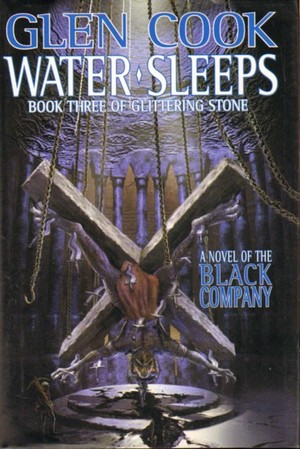 I just finished Water Sleeps (1999), the ninth and penultimate volume in Glen Cook’s Black Company series. Instead of the gigantic battles where legions of soldiers clash under the evil glow cast by demonic sorceries we’re used to from him, Cook focuses here on subtler subjects. Yes, as last week’s review made clear, it’s chock-a-block with nasty twists, kidnappings, and assassinations, but there’s a quieter aspect to this book than to any of the others. For all the craziness that arises, particularly in the second half, this book really starts presenting the Black Company as family. There’s been lots of lip service to that effect over the course of the previous eight books, but we haven’t much seen it borne out. For that reason all the deaths and farewells in Water Sleeps — and there are plenty — have a greater poignancy and impact than ever before.
I just finished Water Sleeps (1999), the ninth and penultimate volume in Glen Cook’s Black Company series. Instead of the gigantic battles where legions of soldiers clash under the evil glow cast by demonic sorceries we’re used to from him, Cook focuses here on subtler subjects. Yes, as last week’s review made clear, it’s chock-a-block with nasty twists, kidnappings, and assassinations, but there’s a quieter aspect to this book than to any of the others. For all the craziness that arises, particularly in the second half, this book really starts presenting the Black Company as family. There’s been lots of lip service to that effect over the course of the previous eight books, but we haven’t much seen it borne out. For that reason all the deaths and farewells in Water Sleeps — and there are plenty — have a greater poignancy and impact than ever before.
At the end of the first part of Water Sleeps, the Black Company had left Taglios. With the sort of misdirection and duplicity that is at its heart, the Company split into several groups, adopted secret identities, and lit out separately for the uttermost end of the known world: the Plain of Glittering Stone. Croaker, Lady, Murgen — in fact, most of the major members of the company — had been trapped inside a maze of caverns beneath the Plain by their oldest remaining enemy: Soulcatcher. It had taken fifteen years for the Company’s captain, Sleepy, to come up with a plan to free them and the means to carry it out.
Sleepy and her comrades arrive at the edge of the Plain and quickly outmaneuver the Taglian regional commander, Suvrin. A clever, doughy man who has risen to his position based more on family connections than military competence, he is unable to escape manipulation by Sleepy and ends up willingly signing on with the Company. I mention this bit here because it will become very important in the series’ finale, Soldiers Live. It also reinforces how the Company prefers to operate. From long experience as a spy and urban guerilla, Sleepy has become adept at quickly assessing someone’s real nature and playing to it.
Gradually the rest of the Company, their dependents, and their animals and baggage train make it to the entrance to the Plain, and just in time. Once again, Murgen’s ability to spy via astral projection saves the Company. He sees Soulcatcher, having figured out Sleepy’s plan, in hot pursuit. Barely forewarned of her imminent arrival, the Company rushes its people to the safety of the Plain — where instant death awaits any who enter without the protection of the Nyueng Bao key — while preparing a deadly reception for Soulcather at its entrance. It doesn’t succeed in killing Soulcatcher, and she ends up with the the Kina-possessed Daughter of Night and Naryan Singh as her prisoners, but the Company escapes. Soon they are on the brink of recovering their lost comrades.
It as this point the truth of the vast, circular Plain of Glittering Stone is finally revealed. It is a gigantic artifact created by a vanished race and connects sixteen worlds. Whether they are different realities, the same world at different times, no one knows. What is known is that humans, being the greedy, vicious things they are, turned to conquest across the sixteen worlds. At some point, the greatest villains of the universe — now remembered as gods in the Gunni pantheon, though their origin is unclear — pooled their resources and elevated one of their own to even greater heights of power and wickedness: Kina the Destroyer. Eventually she was cast down and imprisoned far beneath the giant fortress and someone — or possibly the Plain itself — created a giant golem, Shivetya, to protect the the gates and oversee traffic between the worlds.
…
Read More Read More


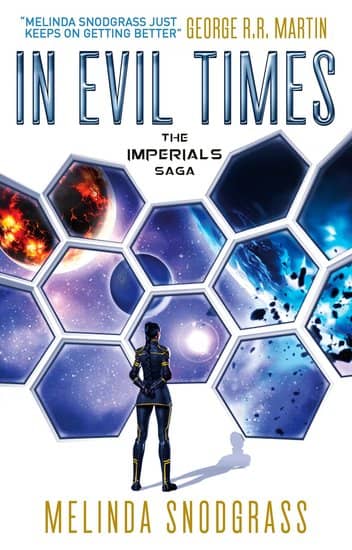
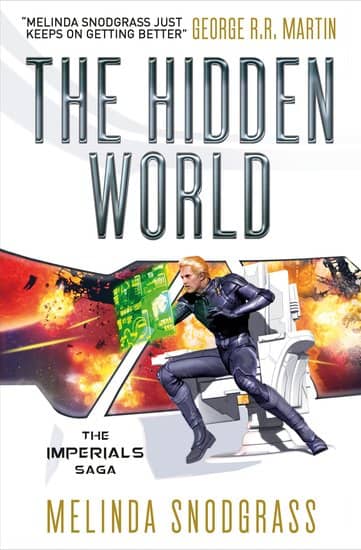
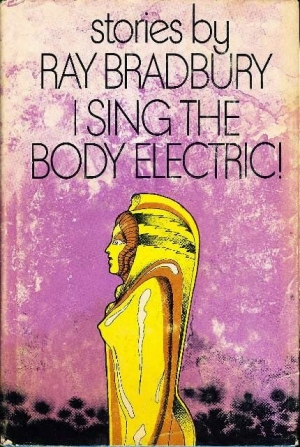

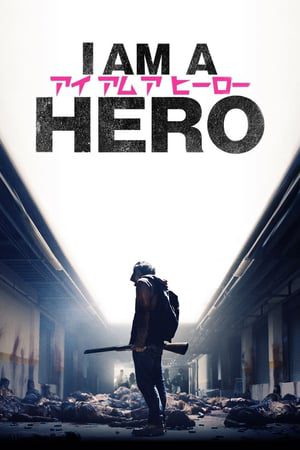


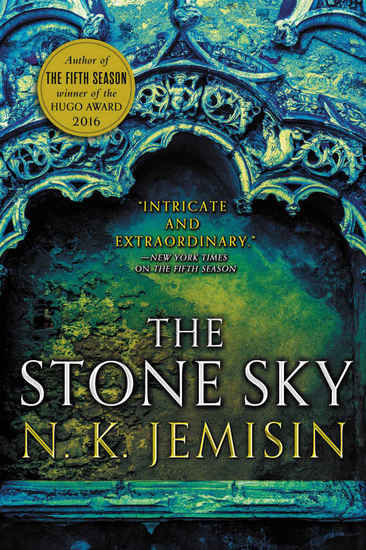
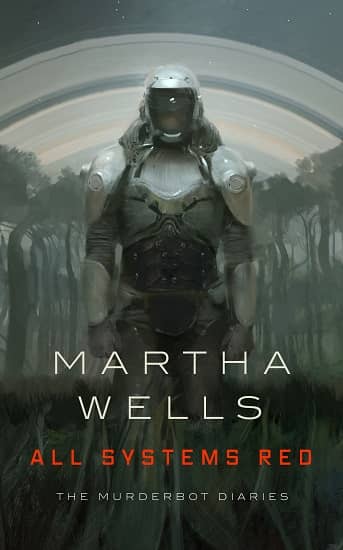
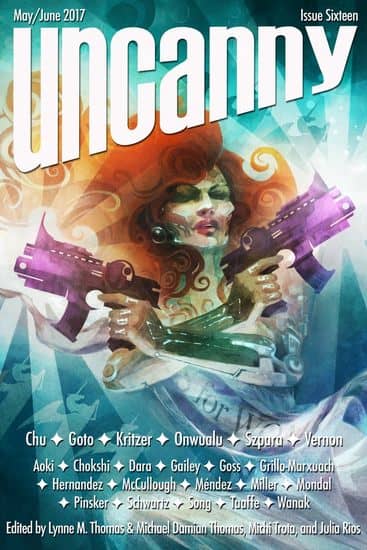
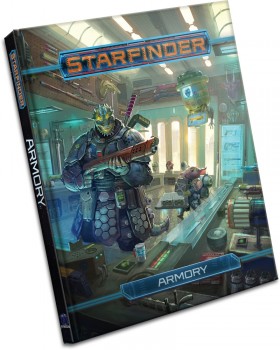
 I had three consecutive movies I wanted to watch on July 23. All three came from director Shinsuke Sato, all three were live-action manga adaptations, and all three were followed by question-and-answer sessions with Sato (the first at the De Sève Theatre, the second two at the larger Hall). I’ll write up what he had to say about his films in a separate post tomorrow. Today, my impressions of the movies themselves: the zombie apocalypse thriller I Am a Hero, the supernatural epic Bleach, and the science-fictional super-hero movie Inuyashiki. Note that I have read precisely none of the original works these movies were based on, and can speak only to the films I saw.
I had three consecutive movies I wanted to watch on July 23. All three came from director Shinsuke Sato, all three were live-action manga adaptations, and all three were followed by question-and-answer sessions with Sato (the first at the De Sève Theatre, the second two at the larger Hall). I’ll write up what he had to say about his films in a separate post tomorrow. Today, my impressions of the movies themselves: the zombie apocalypse thriller I Am a Hero, the supernatural epic Bleach, and the science-fictional super-hero movie Inuyashiki. Note that I have read precisely none of the original works these movies were based on, and can speak only to the films I saw.